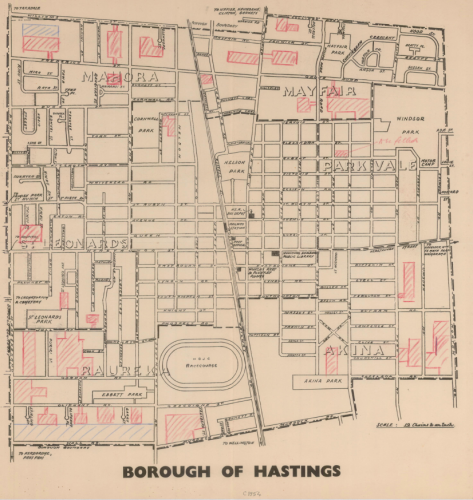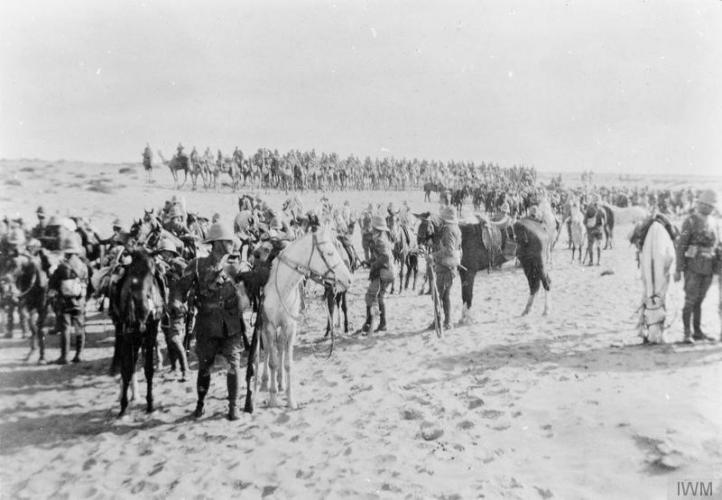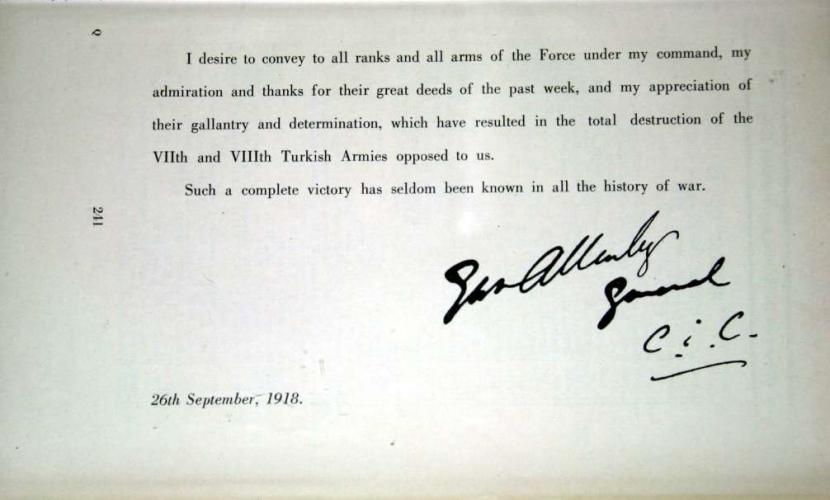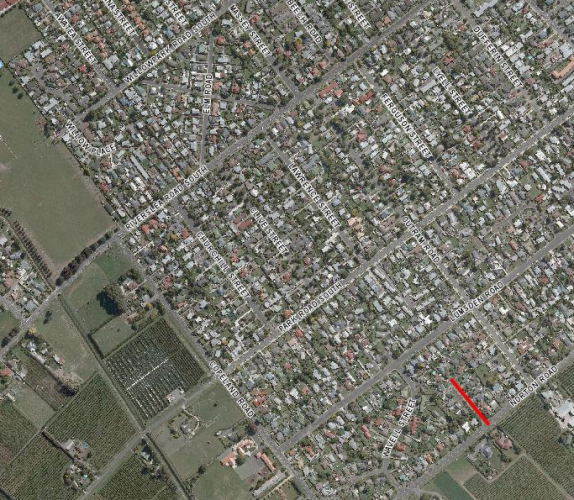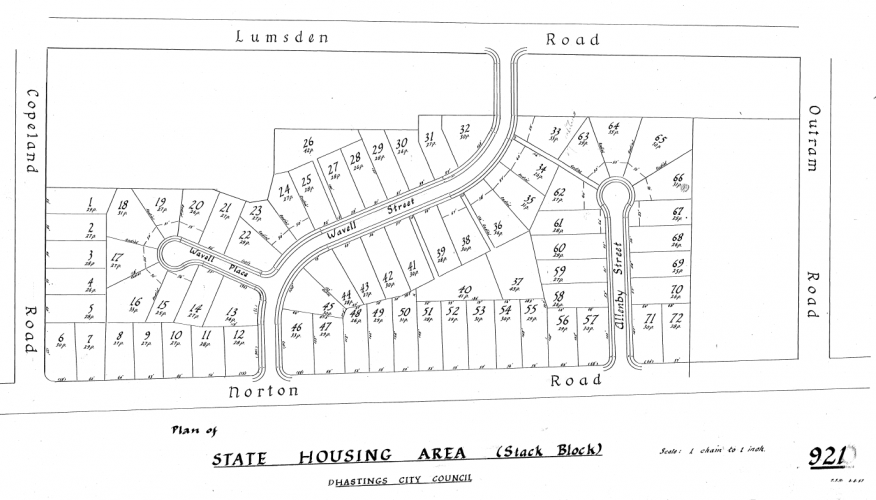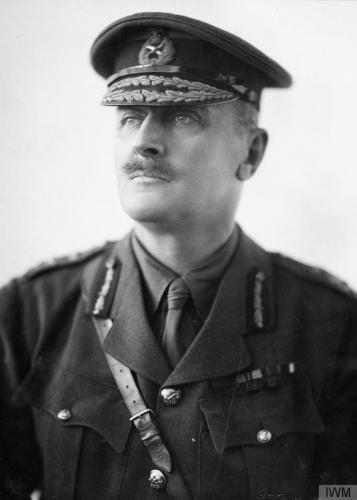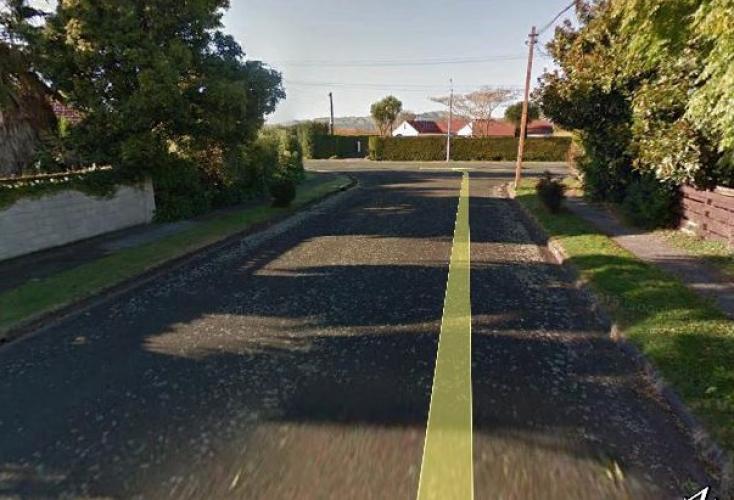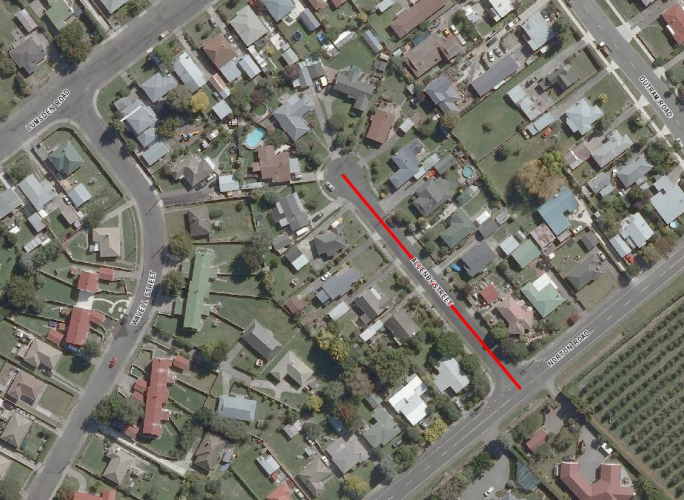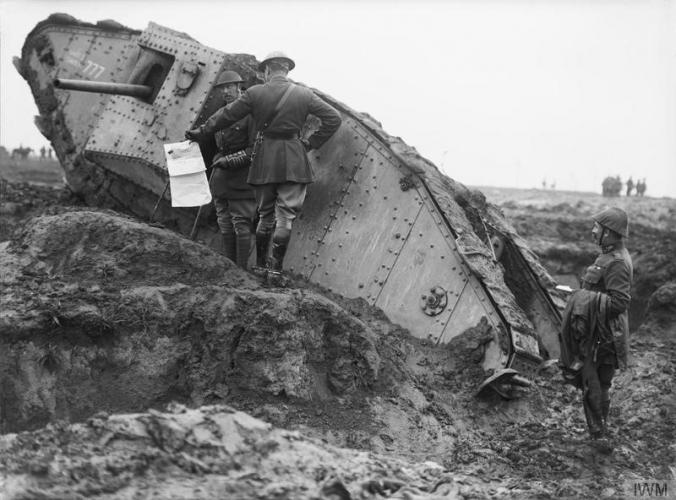046 Allenby Street Hastings, street view
Reason for the name
Named in honour of Field Marshal Sir Edmund Allenby (WWI and Boer War). Allenby Street was developed at the same time as Wavell Street/Place (also named for a Field Marshall who served in the Boer War and WWI, and in Wavell’s case also WWII). Hastings has several streets named for Field Marshalls.
Allenby Street was developed at the same time as Wavell Street / Place (also named for a Field Marshall who served in the Boer War and WWI, and in Wavell’s case also WWII). Hastings has several streets named for Field Marshalls. Wavell served under Allenby, and wrote a biography of him, Allenby: A Study in Greatness. By General Sir Archibald Percival Wavell. Oxford University Press.
Allenby Street is located in the (actual) South West of Hastings, but local coordinates would refer to it as “east” as the grid system does not align to North-South / East-West. Allenby Street comes off Norton Road in the suburb of Akina and was developed around the same time as Wavell Street / Place (also named for a Field Marshall who served in the Boer War and WWI, and in Wavell’s case also WWII).
Authors: Helen Gelletly, Cherie Flintoff HDC
Field Marshal Edmund Henry Hynman Allenby, 1st Viscount Allenby GCB, GCMG, GCVO (23 April 1861 – 14 May 1936) was an English soldier and British Imperial Governor.
Allenby was born in 1861. He sat the exam for the Royal Military College, Sandhurst in 1880, was commissioned as a lieutenant in 1882 and joined his regiment in South Africa later that year.
Allenby returned to Britain in 1890 and he sat – and failed – the entry exam for the Staff College in Camberley. Not deterred, he sat the exam again the next year and passed. Captain Douglas Haig also entered the Staff College at the same time, thus beginning a rivalry between the two that ran until the First World War. Allenby was more popular with fellow officers, even being made Master of the Draghounds in preference to Haig who was the better rider. Graduating in 1897, Allenby was well-liked by his fellow officers and described as possessing "much practical common sense" as well as being an "active and good soldier."
He was promoted to Major in 1897 and was posted to the 3rd Cavalry Brigade, then serving in Ireland, as the Brigade-Major in March 1898.
At the outbreak of the Second Boer War, Allenby was returned to his regiment and went back to South Africa. Allenby quickly gained a reputation as a bold field commander, conducting a brilliant demonstration near Colesberg on January 14 before taking part in the relief of Kimberley and the Battle of Paardeberg Following the capture of Bloemfontein and Pretoria, Allenby was given command of one of the Cavalry Division's columns and tasked with protecting convoys and battling insurgents. Highly effective in this role, Allenby's column never lost a convoy or battle during his time in command.
Allenby was quickly promoted to local lieutenant-colonel on 1 January 1901, local colonel on 29 April 1901, lieutenant-colonel on 2 August 1902 and brevet colonel on 22 August 1902.
After returning to England he became commanding officer of the 5th Royal Irish Lancers promoted to the substantive rank of colonel, and to the temporary rank of brigadier general on 19 October 1905. He assumed command of the 4th Cavalry Brigade in 1906. He was promoted again to the rank of Major-General on 10 September 1909 and was appointed Inspector-General of Cavalry in 1910 due to his extensive cavalry experience.
During the First World War, Allenby initially served on the Western Front in command of the single cavalry division initially sent as part of the British Expeditionary Force (BEF) sent to France. The cavalry division first saw action in semi-chaotic circumstances covering the retreat after the Battle of Mons. The division distinguished itself under Allenby's direction in the subsequent fighting, with minimal resources at its disposal, at the First Battle of Ypres. He voluntarily moved to command of V Corps in May 1915, with some successes but heavy troop losses and in October 1915, Allenby was promoted to lead the British Third Army and made Lieutenant-General (substantive rank) on 1 January 1916. In mid-Summer 1916, he was the Army Commander in support of the launch of the Battle of the Somme offensive, though his men did not bear the brunt of the fighting.
In April 1917, Allenby's troops played a key role in the Battle of Arras, where Allenby failed to fully exploit a key breakthrough. He returned to England in 1917 after Haig lost confidence in him (the lack of trust appeared to have been mutual, and as noted earlier they had been rivals since Staff College) and he was replaced as head of 3rd Army (days after being promoted to full General).
Allenby was then given command of the Egyptian Expeditionary Force. He quickly won the respect of his troops by making frequent visits to the EEF's front-line units, in a marked change from the previous leadership style of leading from Cairo. Allenby moved the EEF's GHQ from the Egyptian capital city to Rafah, nearer to the front lines at Gaza, and re-organized the disparate forces of the EEF into a three primary corps order of battle. He also approved using Arabic irregular forces, under the direction of a young British Army Intelligence officer named T. E. Lawrence (Lawrence of Arabia).
In June 1917 The Chief of the Imperial General Staff (CIGS) Field Marshal Sir William Robert Robertson appointed then Brevet Lieutenant Colonel Wavell as his personal liaison officer with General Allenby, Commander-In-Chief of the Egyptian Expeditionary Force. Wavell credits Allenby with teaching him about command in the desert, the value of surprise and deception, the importance of scrupulous attention to detail and logistics, the art of instilling confidence in demoralised troops, developing a well-honed staff HQ and the value of personal example – Allenby moving the General HQ out of Cairo closer to the troops.
Allenby’s planning and use of electronic warfare and false horses to mislead the Turks about his forces strength and movements led to great success. His battle at Megiddo has been called one of the most brilliant campaigns of military history.
Having reorganised his regular forces, Allenby won the Third Battle of Gaza (31 October – 7 November 1917) by surprising the Turkish defenders with an attack at Beersheba. His force pushed northwards towards Jerusalem. The Ottomans were beaten at Junction Station (10–14 November), and Jerusalem was captured on 9 December 1917. Allenby dismounted and entered the city on foot through the Jaffa Gate, together with his officers, out of respect for the status of Jerusalem as the Holy City important to Judaism, Christianity, and Islam
New Zealanders were part of the forces under Allenby’s command, and in his Introduction to The New Zealanders in Sinai and Palestine, Whitcombe and Tombs Limited, 1922, Auckland, he noted “…When I assumed command of the Egyptian Expeditionary Force, in June, 1917, the New Zealanders were already veteran troops proved in many a battle. Two more years of hardship and danger were to pass before they saw the end of their labours. Two years of unceasing toil, crowned with much glory… Nothing daunted these intrepid fighters; to them nothing was impossible. I am proud to have had the honour of commanding them; and they have my congratulations, my thanks and my good wishes.”
The campaign slowed in spring of 1918 to send troops to reinforce the Western Front, but resumed in August with the arrival of Commonwealth troops (from Australia, New Zealand, India, and South Africa), breaking through the Ottoman lines at the Battle of Meggido with a series of deceptive moves and good use of cavalry, air and other forces then quickly advancing to Damascus then Aleppo. The Ottoman Empire capitulated on 30 October 1918.
Allenby was known as someone happy to get his hands dirty and to work in the same conditions as his troops. A story is told of Allenby and the Duke of Connaught arriving at the edge of the Dead Sea and seeing motorboats moored a little too far off shore being knocked about by the waves while the troops, who had been swimming in the heat, took a siesta. He swiftly ordered the boats pulled in, with Allenby and the Duke in full uniform assisting “naked Australians” on the lines. One of his commanders in the Middle East, Sir Philip Chetwode, is reported as describing Allenby as “the straightest man who ever drew on a boot.”
Allenby was made a Field Marshall on 31 July 1919 and he was created Viscount Allenby of Megiddo and of Felixstowe in the County of Suffolk on 7 October. He remained in the Middle East as High Commissioner for Egypt and the Sudan until 1925, retiring from active service in that year. Allenby steered Egypt firmly but impartially through political disturbances and saw it recognized as a sovereign state in 1922.

